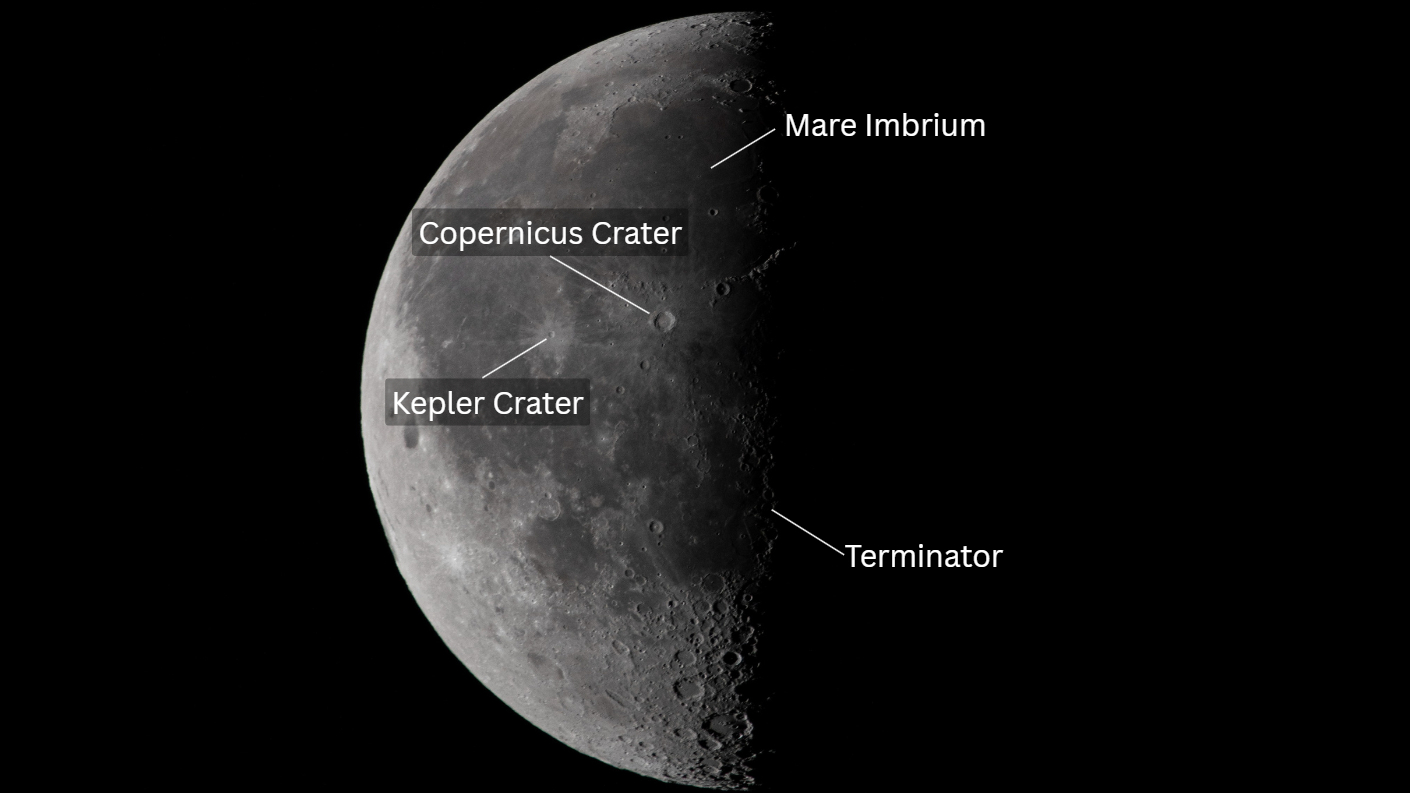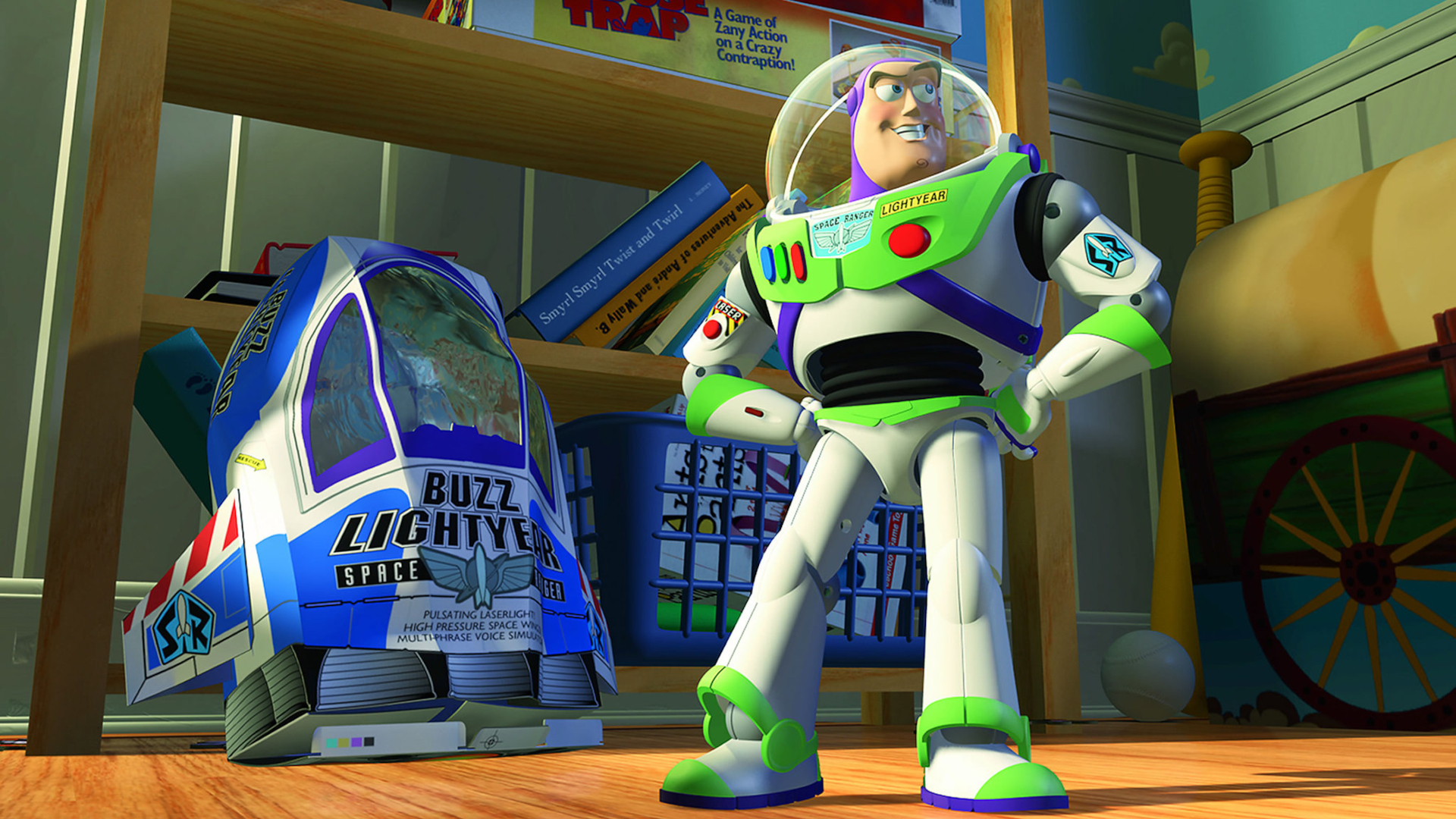Don't miss the third quarter moon shine near Saturn in the eastern sky tonight
The left-hand side of the moon will appear lit by direct sunlight, with the right bathed in shadow.
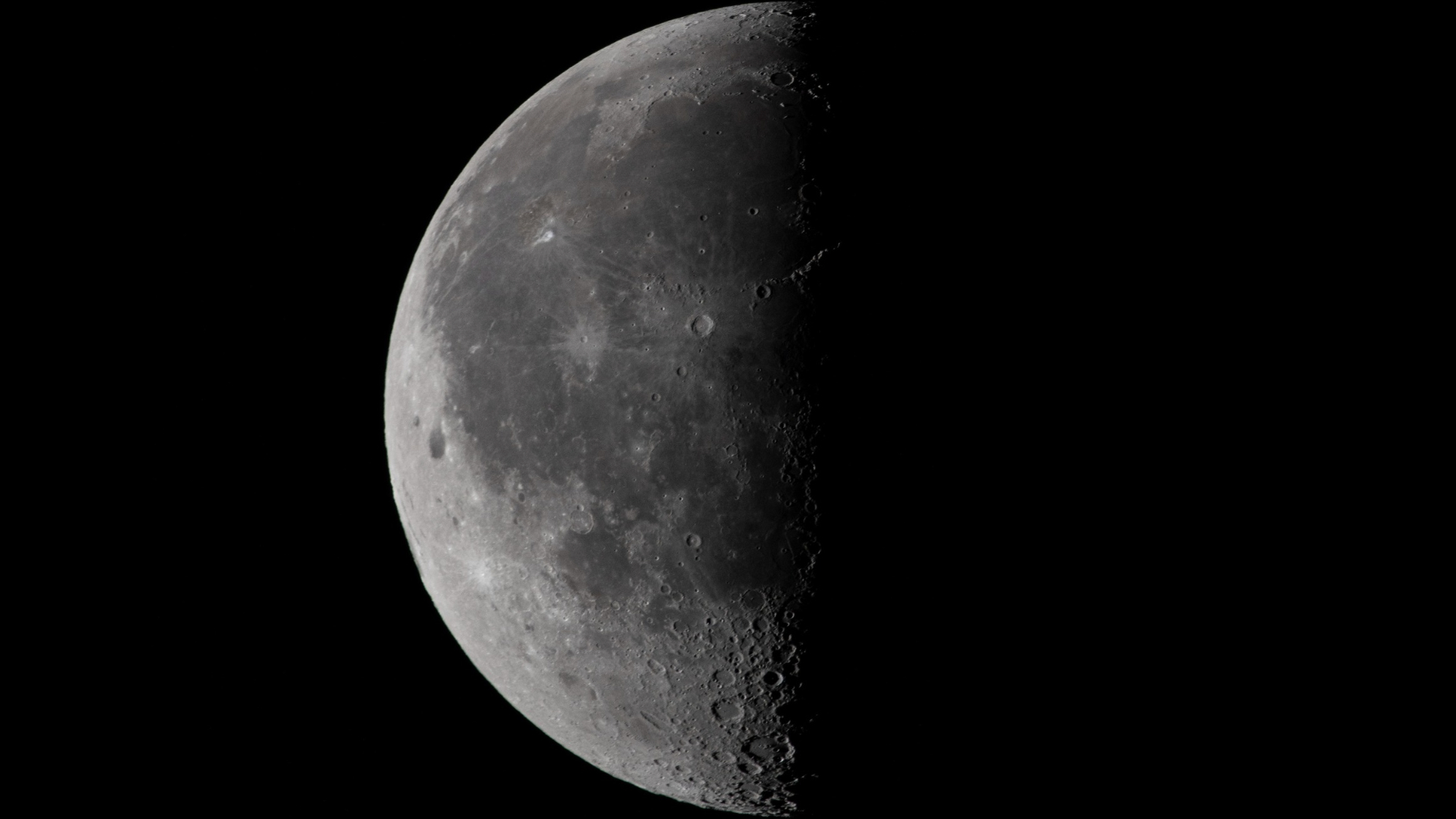
Don't miss the third quarter moon rising with Saturn and the constellation Pisces in the eastern sky at midnight tonight!
July's third quarter moon phase occurs at 8:38 EDT (0038 GMT) on July 17, according in-the-sky.org. At this moment, skywatchers in the northern hemisphere will see the left side of the lunar disk illuminated by sunlight, while the right side remains cloaked in shadow.
Stargazers across the U.S. will get their first glimpse at the third quarter moon as it rises above the eastern horizon shortly before midnight local time on July 17, with the bright planet Saturn shining off to the east. The exact time for moonrise will vary based on your location, so be sure to check a website like TimeandDate.com to find specifics for your locale.
Once risen, the third quarter moon will remain visible throughout the night, allowing plenty of time to explore the illuminated regions of the lunar disk.
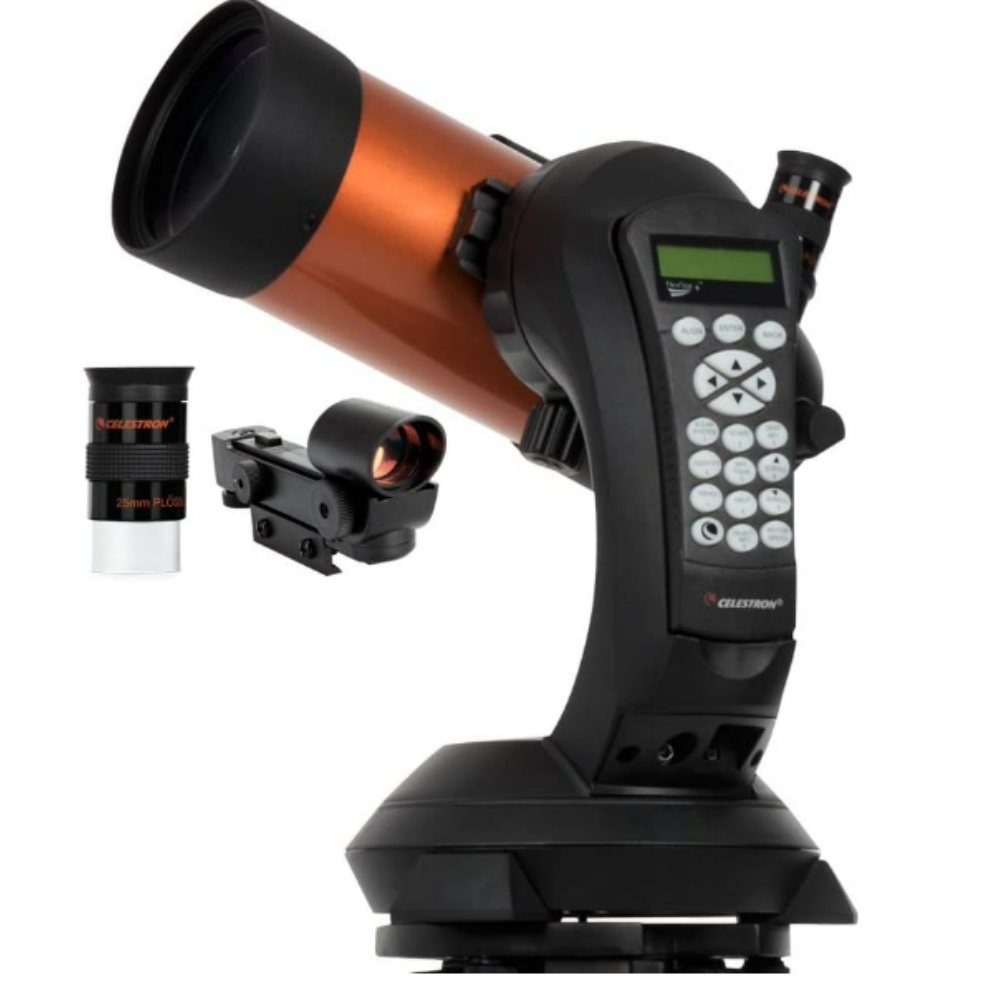
Want to see the moon's craters for yourself? The Celestron NexStar 4SE is ideal for beginners wanting quality, reliable and quick views of celestial objects. For a more in-depth look at our Celestron NexStar 4SE review.
The best place to look? Along the terminator — the line separating night from day on the moon's surface. Here, sunlight emphasises the rims of craters formed in violent asteroid impacts, while leaving swathes of their interiors bathed in shadow.
Look slightly to the left of the terminator near the equator to spot the 57-mile-wide (93-kilometers) Copernicus Crater on the southern rim of Mare Imbrium (Latin for the "Sea of Showers"). This ancient basaltic plain formed billions of years ago when lava flooded impact basins, before solidifying to re-pave the lunar surface.
The smaller Kepler Crater will also be visible Both Copernicus and the smaller Kepler Crater to its left are surrounded by bright streaks of reflective material that were thrown out in the violent aftermath of their creation.
Breaking space news, the latest updates on rocket launches, skywatching events and more!
While the third quarter moon will present a mesmerizing sight to the naked eye, a telescope with an aperture of 6 inches will help resolve a wealth of craters and finer details marking its ancient surface. If you're new to lunar observing, be sure to read our guide to exploring the moon with a telescope.
Stargazers interested in getting a closer view of Earth's natural satellite should check out our roundup of the best telescopes and binoculars for moongazing available in 2025.
Editor's Note: If you capture an image of the third quarter moon and want to share it with Space.com's readers, then please send your photo(s) and comments, along with your name and the location of your shoot to spacephotos@space.com.
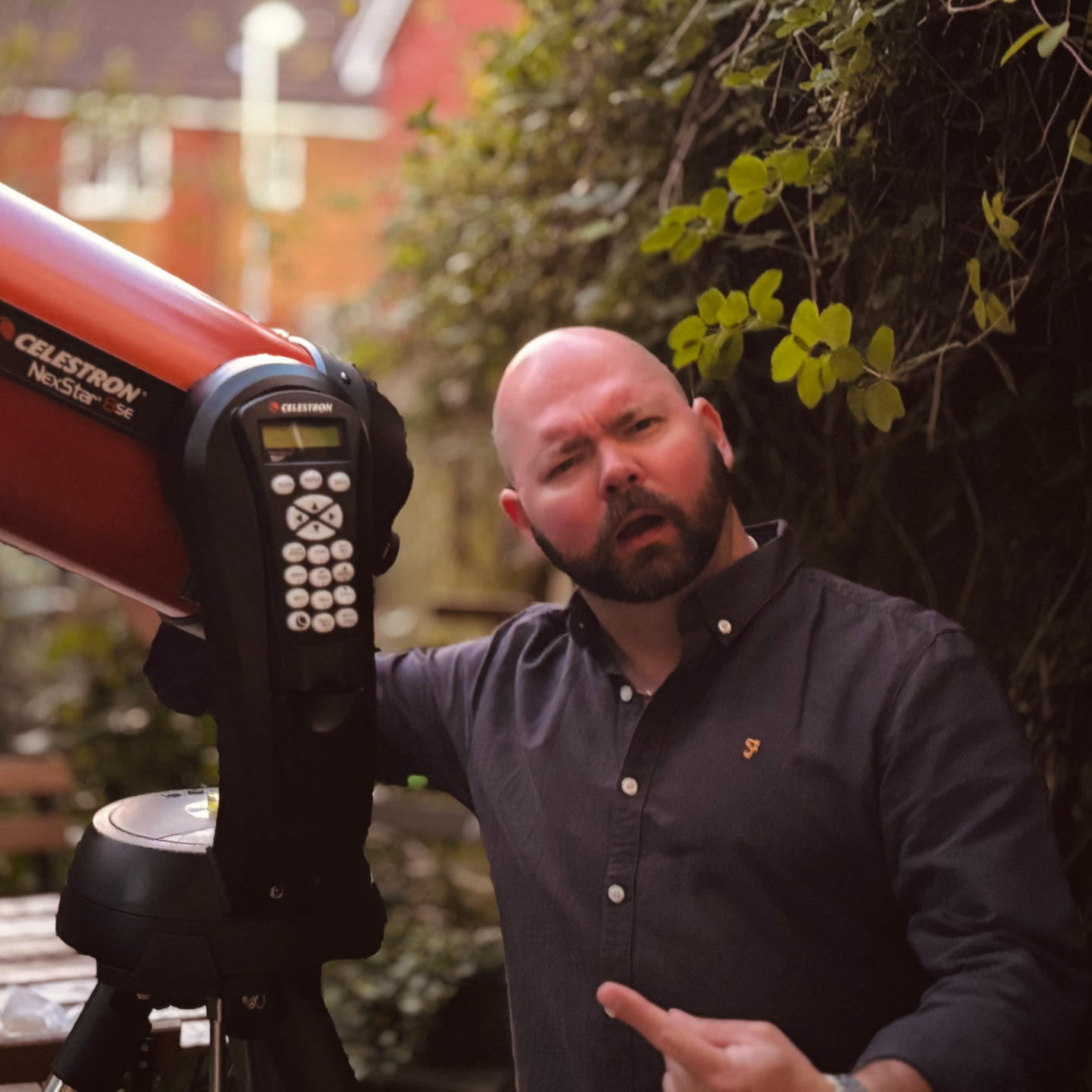
Anthony Wood joined Space.com in April 2025 after contributing articles to outlets including IGN, New Atlas and Gizmodo. He has a passion for the night sky, science, Hideo Kojima, and human space exploration, and can’t wait for the day when astronauts once again set foot on the moon.
You must confirm your public display name before commenting
Please logout and then login again, you will then be prompted to enter your display name.
